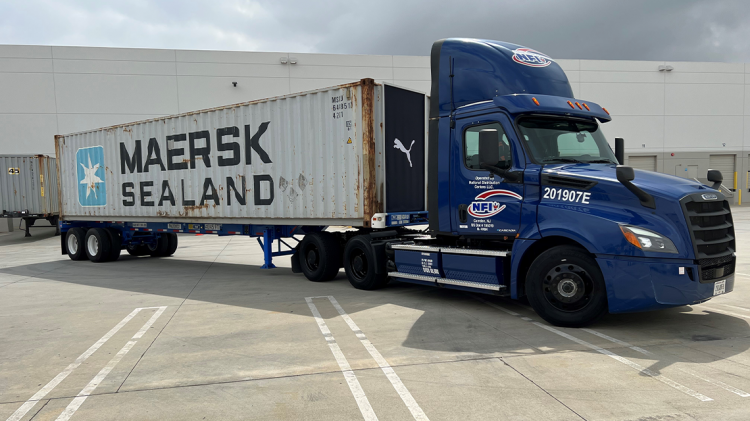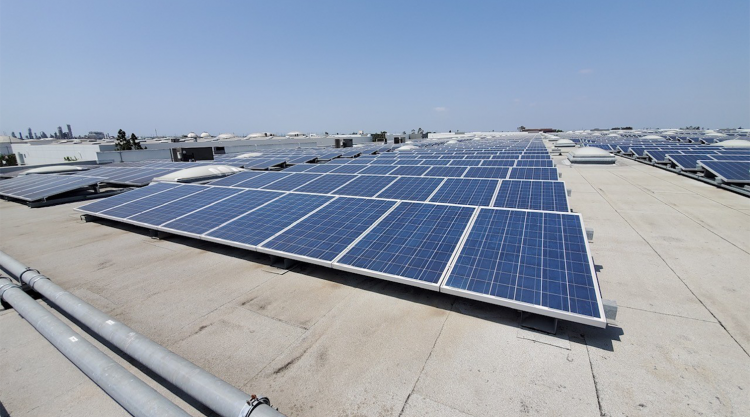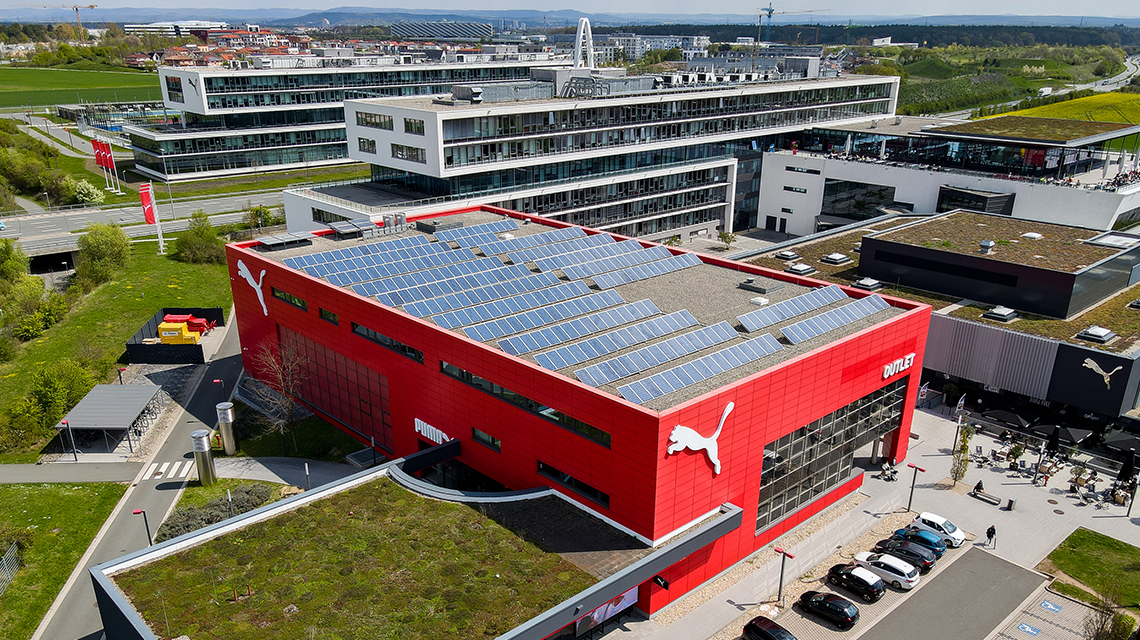
Going electric
in our logistics!
First electric truck starts operations at PUMA's California warehouse
May 4, 2022First electric truck starts operations at PUMA's California warehouse
May 4, 2022PUMA is always looking for ways to reduce carbon emissions across its business. Most recently, the first fully electric truck arrived at our warehouse in Torrance, California, carrying a container full of PUMA goods from the port in Los Angeles.
This vehicle from our drayage partner NFI is a first test vehicle but by the third quarter of this year, we expect to have five electric trucks in operation to carry goods from the port to the warehouse.
For us this is a huge step towards cleaner logistics. Instead of using an LNG or a clean diesel truck, we can now shift goods from the port to the warehouse with no tailpipe emissions.
The distribution center in Torrance is already covered with solar panels, which helps operate the logistics systems inside the building. As the solar panels have already been in place for more than eight years, PUMA is looking to upgrade this system to produce even more energy.
Last month, we announced that we managed to cut our own carbon emissions and those coming from our supply chain between 2017 and 2021. Between 2017 and 2021, our own carbon emissions and those from purchased energy dropped by 88%, while emissions in the supply chain, the most carbon-intensive part of our business, fell by 12%, even though we recorded strong business growth during this period.
PUMA focused on purchasing 100% renewable electricity through renewable electricity tariffs and renewable energy attribute certificates and moving our company’s car fleet to electric engines, using more sustainable materials and efficiency improvements at a factory level to achieve this reduction.
To further reduce our Scope 1 emissions, which can be attributed largely to the vehicles in our fleet, we increased the number of zero or low emission cars globally to 108, or 15% of our global PUMA car fleet. For the future we plan to increase the number of cars with alternative engines by 10% each year.

